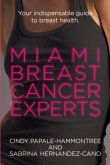Understanding the anatomy and function of the breasts is crucial for maintaining optimal breast health. In this subchapter, we will delve into the intricate details of the breast structure and explore the vital functions it performs in a woman's body. The breasts are remarkable organs located on the chest wall, composed mainly of fatty tissue, connective tissue, and glandular tissue. The glandular tissue is responsible for milk production and is divided into lobes, which further branch out into smaller lobules. These lobules are connected to the milk ducts, which transport milk to the nipple during breastfeeding. The breast is supported by ligaments and muscles, including the pectoralis major muscle, which gives the breast its shape and contour. The size and shape of breasts vary widely among women, influenced by factors such as genetics, hormonal fluctuations, and age. Breasts undergo cyclic changes throughout a woman's reproductive life. These changes are primarily driven by hormones, particularly estrogen and progesterone. During the menstrual cycle, hormonal fluctuations cause the breasts to become more sensitive and tender in preparation for potential pregnancy. Breasts also play a crucial role in breastfeeding. When a woman becomes pregnant, the levels of estrogen and progesterone increase, stimulating further changes in breast tissue. The mammary glands enlarge, and the milk ducts proliferate to prepare for lactation. Once the baby is born, the hormone prolactin triggers milk production in response to the baby's suckling. Apart from their reproductive function, the breasts also serve as an important indicator of overall health. Regular breast self-examinations are essential for early detection of any abnormalities, such as lumps or changes in size, shape, or texture. Understanding your breast anatomy will aid in recognizing these changes and seeking prompt medical attention if necessary. Furthermore, maintaining breast health goes beyond self-examinations. A healthy lifestyle, including regular exercise, a balanced diet, and limited alcohol consumption, can significantly reduce the risk of breast-related complications. It is also crucial to wear well-fitting bras that provide adequate support to prevent strain on the ligaments and muscles
Hinweis: Dieser Artikel kann nur an eine deutsche Lieferadresse ausgeliefert werden.
Hinweis: Dieser Artikel kann nur an eine deutsche Lieferadresse ausgeliefert werden.








